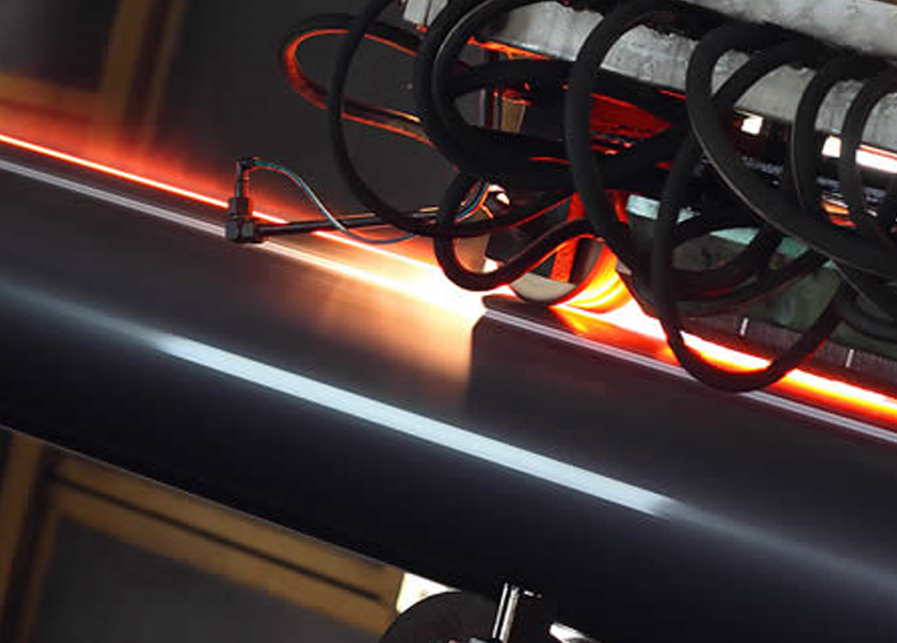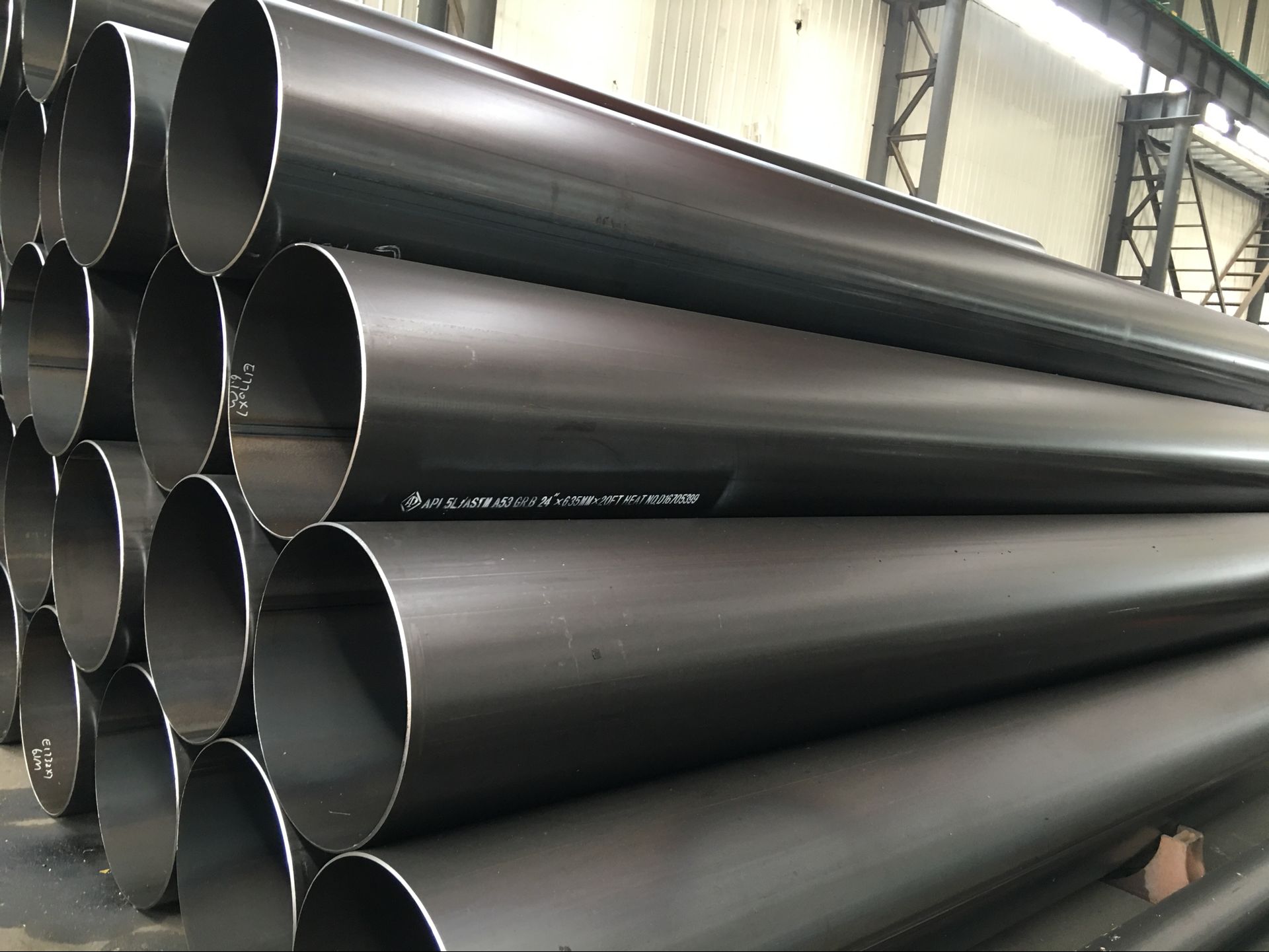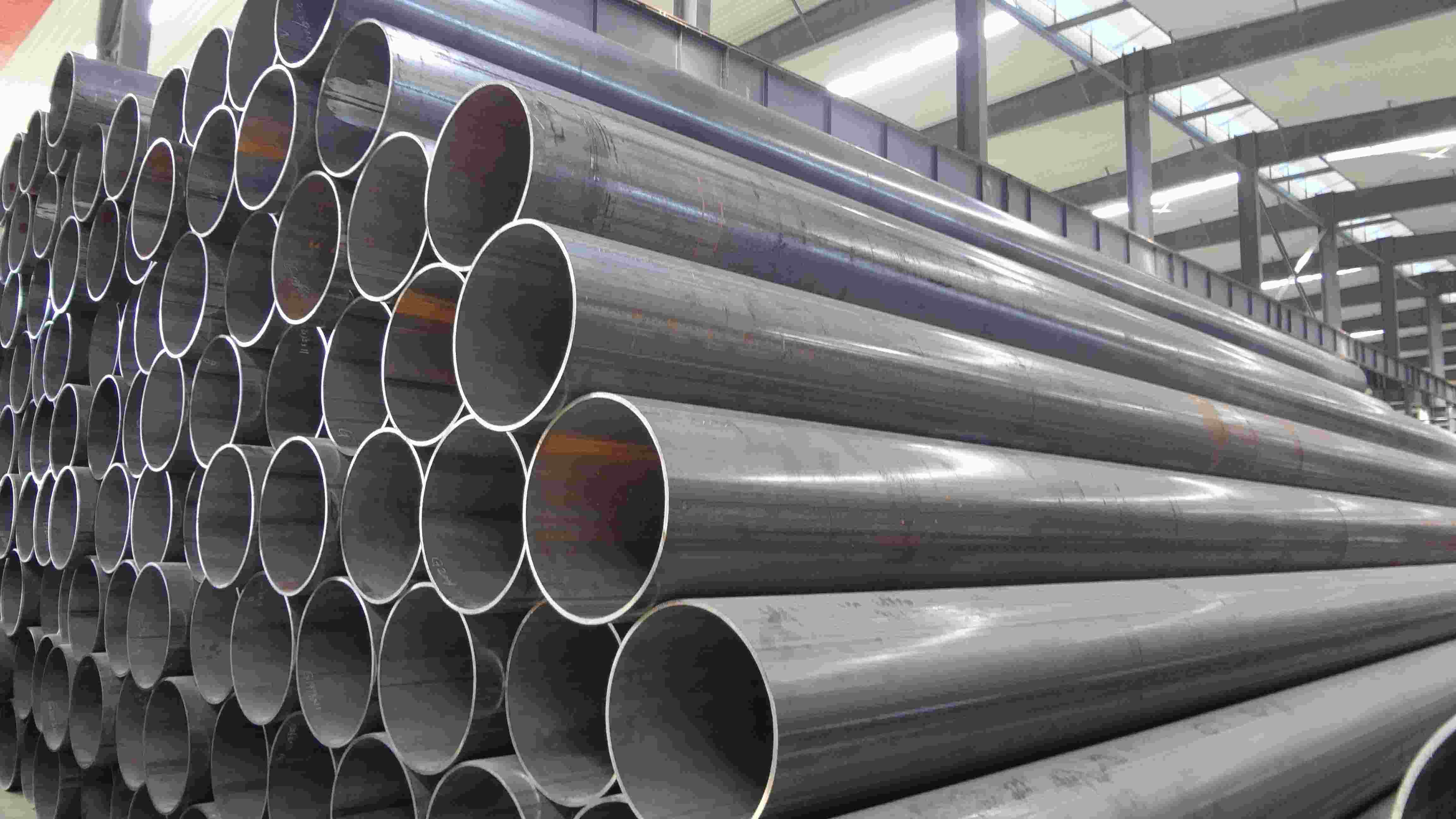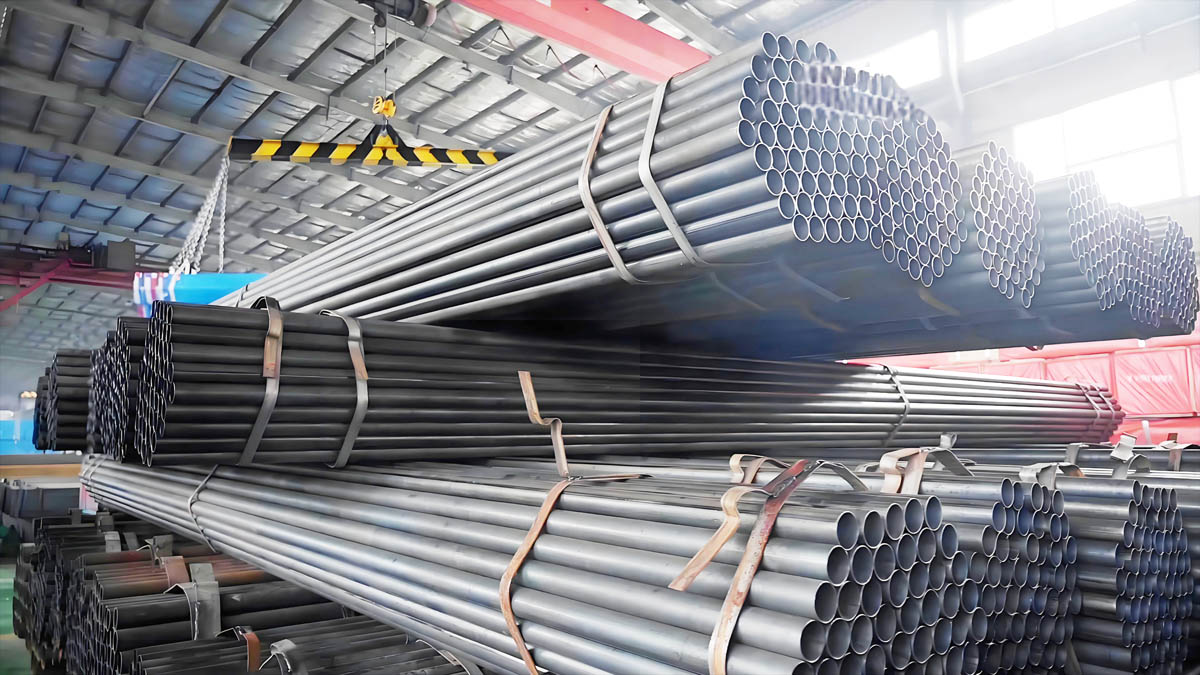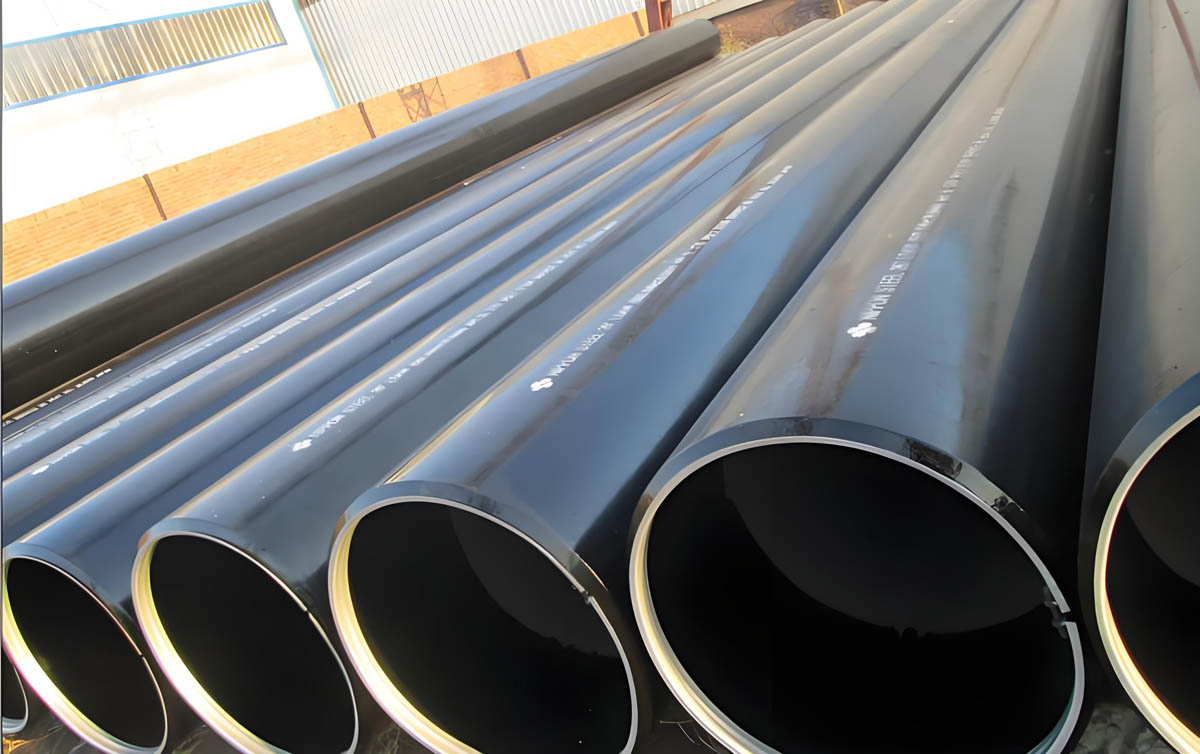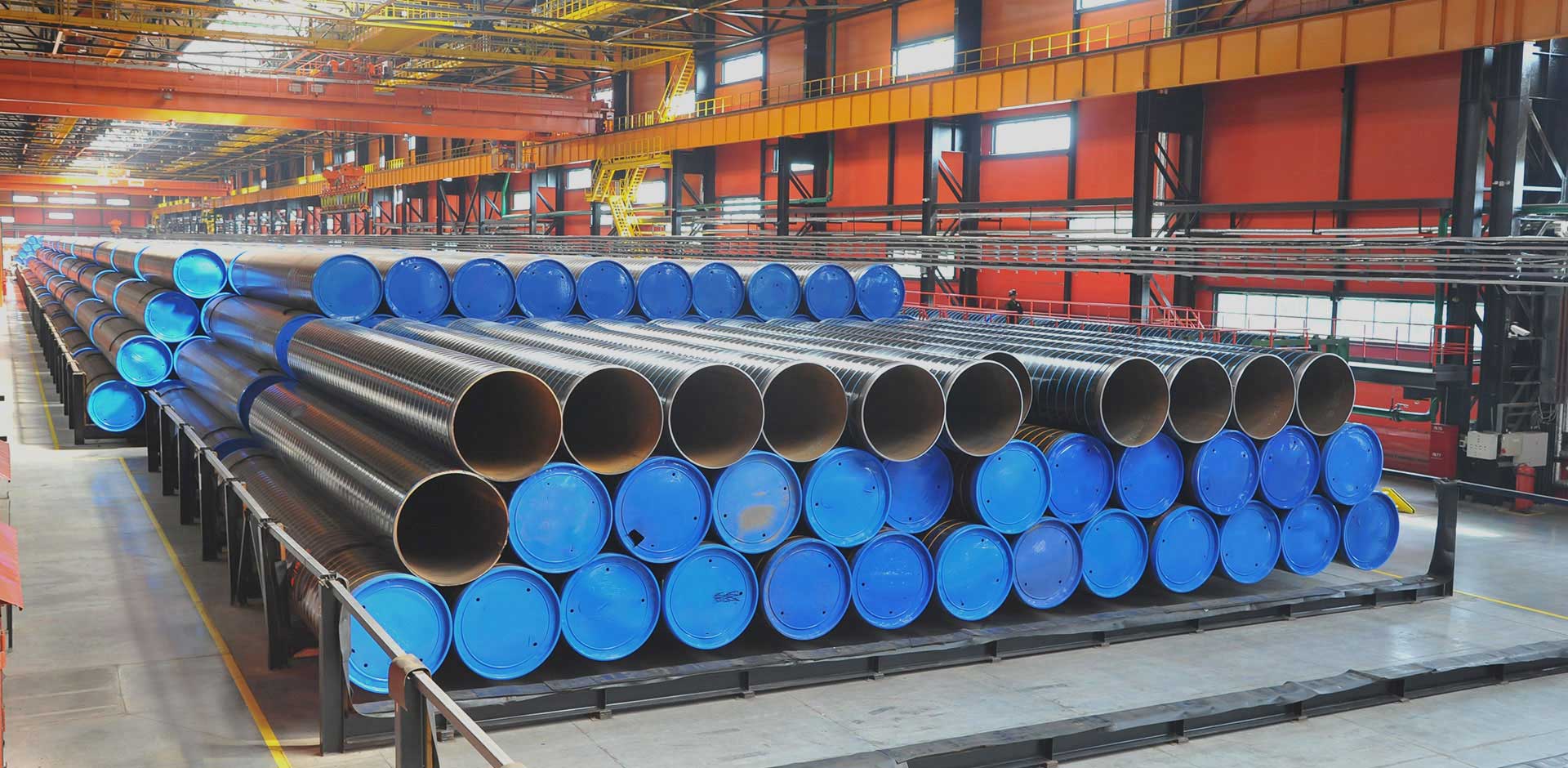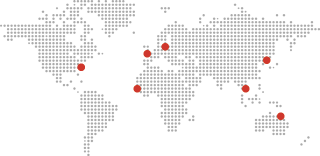ASTM A671 vs. ASTM A672 Steel Pipe: A Comprehensive Comparison
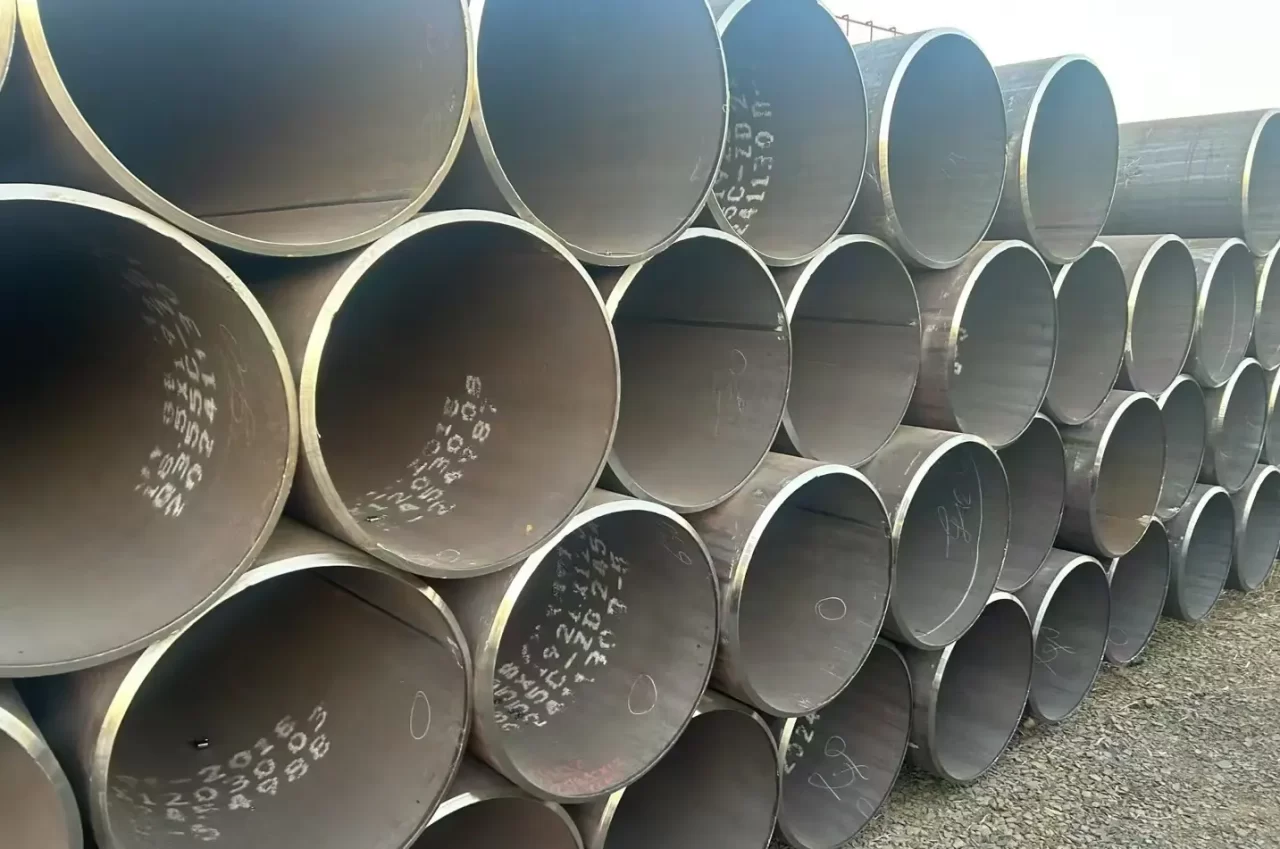
ASTM A671 vs. ASTM A672 Steel Pipe: A Comprehensive Comparison
Introduction to ASTM A671 and ASTM A672 Steel Pipes
ASTM A671 and ASTM A672 are specifications for electric-fusion-welded (EFW) steel pipes designed for high-pressure service, but they serve distinct purposes due to differences in their temperature ranges, base materials, and applications. ASTM A671 is tailored for low-temperature environments, down to -50°F (-46°C), making it ideal for cryogenic pipelines, liquefied natural gas (LNG) systems, and cold-climate oil and gas transmission. In contrast, ASTM A672 is designed for moderate-temperature service, up to 650°F (343°C), and is commonly used in power generation, petrochemical, and oil refining for applications like boiler tubes and heat exchangers. Both specifications utilize pressure vessel quality plates, but their material compositions and heat treatments are optimized for their respective conditions.
The EFW process for both involves rolling plates into cylinders and welding the longitudinal seam with filler metal, typically via longitudinal submerged arc welding (LSAW), ensuring robust seams for large-diameter pipes. ASTM A671 emphasizes low-temperature toughness and often includes NACE MR0175 compliance for sour service, while ASTM A672 prioritizes strength and corrosion resistance at moderate temperatures. This article provides a detailed comparison of their chemical composition, mechanical properties, corrosion resistance, manufacturing processes, applications, and dimensional tolerances, with a focus on grades like A671 CC60 CL22 and A672 C60/C70. Comparisons with high-performance alloys like Inconel 625 and Alloy 20, as well as API 5L PSL2 BNS, highlight their roles in industrial applications. A comprehensive table summarizes key differences, serving as a valuable resource for engineers.
Chemical Composition and Material Analysis
ASTM A671 and A672 pipes are fabricated from pressure vessel quality plates, but their chemical compositions reflect their distinct applications. ASTM A671 typically uses ASTM A516 plates (Grades 55, 60, 65, 70) or A537, optimized for low-temperature toughness. For example, A671 CC60 (A516 Gr 60) contains carbon (0.04–0.27%), manganese (0.85–1.20%), phosphorus (≤0.025%), sulfur (≤0.025%), silicon (0.15–0.40%), and aluminum (≥0.02%) for deoxidation. The low carbon and impurity levels reduce weld imperfections and brittleness, critical for cryogenic conditions. Supplementary requirements like S2 ensure low-temperature performance at -46°C.
ASTM A672 uses plates like ASTM A515 (Grades 55, 60, 65, 70), A516, A285, or A387, tailored for moderate temperatures. For instance, A672 B60 (A515 Gr 60) has carbon (≤0.24%), manganese (≤0.98%), phosphorus (≤0.035%), sulfur (≤0.035%), and silicon (0.13–0.45%). A672 C60/C65/C70 (A516 Gr 60/65/70) have similar compositions but with tighter controls on impurities for enhanced strength. Compared to Inconel 625 (58% min nickel, 8–10% molybdenum), both A671 and A672 are carbon steels with minimal alloying, relying on coatings for corrosion protection. Alloy 20 (32–38% nickel, 3–4% copper) excels in sulfuric acid resistance, unlike the general-purpose corrosion resistance of A671/A672. API 5L PSL2 BNS (≤0.12% carbon, CEpcm ≤0.25%) is designed for sour service, aligning with A671’s NACE compliance but not A672’s moderate-temperature focus. The compositions ensure A671’s toughness in cold environments and A672’s reliability at elevated temperatures.
Mechanical Properties
The mechanical properties of ASTM A671 and A672 pipes are tailored to their respective temperature ranges. ASTM A671 CC60 CL22 has a minimum yield strength of 220 MPa (32 ksi), tensile strength of 415–550 MPa (60–80 ksi), and elongation of ≥27% for wall thicknesses ≤25 mm. Supplementary requirement S2 mandates Charpy V-notch impact testing at -46°C, with minimum energy absorption of 14 J (single) and 18 J (average), ensuring low-temperature toughness. ASTM A672 grades vary: B60 has yield 220 MPa, tensile 415–550 MPa, elongation 25%; C60 matches these, while C65 (240 MPa yield, 450–585 MPa tensile, 23% elongation) and C70 (260 MPa yield, 485–620 MPa tensile, 21% elongation) offer higher strength for moderate temperatures.
Both undergo tensile, bend, and hydrostatic tests, with A671 emphasizing low-temperature impact testing and A672 focusing on strength at moderate heat. Compared to Inconel 625 (yield 414 MPa, tensile 827 MPa), both have lower strength but are more cost-effective. Alloy 20 (yield 241 MPa, tensile 551 MPa) is closer in strength but optimized for acid resistance. API 5L PSL2 BNS (yield 245 MPa, tensile 415–760 MPa) is similar to A672 but designed for pipeline transport. A671’s normalizing (CL22) enhances cold toughness, while A672’s heat treatments (e.g., Class 12 PWHT) ensure performance in boilers and heat exchangers, making each suited to its niche.
Corrosion Resistance and NACE Compliance
Both ASTM A671 and A672 pipes, being carbon steel-based, offer moderate corrosion resistance, relying on coatings like epoxy, polyethylene, or fusion-bonded epoxy (FBE) for protection in aggressive environments. ASTM A671, particularly grades like CC60 CL22 S2, is often designed for sour service, complying with NACE MR0175 by controlling hardness (≤22 HRC) and microstructure to resist sulfide stress cracking (SSC) in H2S environments. This makes it suitable for sour gas pipelines, where low sulfur (≤0.025%) and phosphorus (≤0.025%) minimize embrittlement.
ASTM A672, designed for moderate temperatures, is less focused on sour service but resists scaling and oxidation better than low-alloy steels at elevated temperatures. Coatings are critical for both in corrosive media like soil or marine settings. Inconel 625 (PREN ~52) and Alloy 20 (PREN ~34) offer inherent corrosion resistance due to high nickel and molybdenum, far surpassing A671/A672’s coated carbon steel. API 5L PSL2 BNS also meets NACE MR0175 but requires coatings for external corrosion, similar to A671. A672’s corrosion resistance is adequate for petrochemical applications, while A671’s NACE compliance ensures reliability in sour gas environments, with coatings extending service life for both.
Manufacturing and Processing
Both ASTM A671 and A672 pipes are manufactured using the electric-fusion-welding (EFW) process, typically longitudinal submerged arc welding (LSAW), where pressure vessel quality plates are rolled into cylinders and welded with filler metal. ASTM A671 uses plates like A516 Gr 60 for CC60, with normalizing (850–950°C, air cooled) for classes like CL22 to enhance low-temperature toughness. The process includes 100% radiographic testing (RT), ultrasonic testing, and hydrostatic testing to ensure weld integrity, with supplementary requirements like S2 mandating impact testing at -46°C for cryogenic performance.
ASTM A672 employs plates like A515 Gr 60 (B60) or A516 Gr 70 (C70), with heat treatments like normalizing, quenching, or tempering (e.g., Class 12 PWHT) to optimize moderate-temperature strength. Similar NDE (RT, ultrasonic) and hydrostatic tests ensure quality. Compared to Inconel 625, which requires vacuum melting and complex heat treatments, both A671 and A672 are simpler to produce, using basic steelmaking. Alloy 20’s processing is similar but includes stabilization to resist acid corrosion. API 5L PSL2 BNS uses LSAW with stringent NDE for sour service. A671’s focus on low-temperature weld toughness and A672’s on moderate-temperature integrity ensure reliability in their respective applications, with precise welding and testing critical for performance.
Applications
ASTM A671 pipes are used in low-temperature, high-pressure applications, such as cryogenic pipelines, LNG facilities, and cold-climate oil and gas transmission. Grades like CC60 CL22 S2 are ideal for sour gas pipelines and boiler piping in cold environments, as seen in FPSO modules. ASTM A672 pipes serve moderate-temperature, high-pressure applications, including boiler tubes, heat exchangers, and process piping in power plants, petrochemical refineries, and chemical processing facilities. Grades like B60 and C70 are common in steam lines and oil refining systems.
Compared to Inconel 625, used in aerospace and severe marine environments, A671 and A672 are cost-effective for less extreme conditions. Alloy 20 targets sulfuric acid-heavy applications like chemical processing, while API 5L PSL2 BNS is for sour gas pipelines, overlapping with A671 but not A672’s temperature range. A671’s low-temperature focus and A672’s moderate-temperature strength make them complementary, with A671 excelling in cold climates and A672 in power generation. Both use coatings and end finishes (beveled, plain) to enhance adaptability, ensuring reliability in critical infrastructure projects.
Dimensional Tolerances
Dimensional tolerances for ASTM A671 and A672 pipes are specified to ensure precision in high-pressure applications. For A671, outer diameter (OD) tolerance is ±0.5% (e.g., ±5.33 mm for 1066.8 mm OD), wall thickness ±12.5% (e.g., ±1.59 mm for 12.7 mm), and straightness ≤0.2% of length. A672 has similar tolerances: OD ±0.5%, wall thickness ±10–12.5%, and straightness ≤0.2%. Weld seam height is ≤3.2 mm for both, with end finishes (e.g., beveled per ASME B16.25) ensuring compatibility.
Compared to Inconel 625 (ASTM B446: ±0.25 mm for bars), both have looser tolerances due to larger pipe sizes. Alloy 20’s tolerances (e.g., ±0.1 mm for thin sheets) are tighter for specific forms. API 5L PSL2 BNS has OD ±0.75% and wall thickness ±10%, slightly less stringent than A671/A672. These tolerances ensure reliable installation in pipelines and systems, with A671’s focus on cryogenic integrity and A672’s on moderate-temperature performance guiding their respective applications.
Technical Specifications and Parameter Table
The following table summarizes key differences between ASTM A671 and A672, providing a reference for engineers.
| Parameter | ASTM A671 | ASTM A672 |
|---|---|---|
| Temperature Range | Low temperatures (down to -50°F/-46°C) | Moderate temperatures (up to 650°F/343°C) |
| Base Material | A516 Gr 55/60/65/70, A537 | A515 Gr 55/60/65/70, A516, A285, A387 |
| Common Grades | CA55, CB60, CC60, CC65, CC70 | A45, B60, C60, C65, C70 |
| Chemical Composition (CC60/B60) | C: 0.04–0.27%, Mn: 0.85–1.20%, P: ≤0.025%, S: ≤0.025%, Si: 0.15–0.40% | C: ≤0.24%, Mn: ≤0.98%, P: ≤0.035%, S: ≤0.035%, Si: 0.13–0.45% |
| Yield Strength (CC60/B60) | 220 MPa (32 ksi) | 220 MPa (32 ksi) |
| Tensile Strength (CC60/B60) | 415–550 MPa (60–80 ksi) | 415–550 MPa (60–80 ksi) |
| Elongation (CC60/B60) | ≥27% (≤25 mm WT) | 25% |
| Heat Treatment | Normalizing (e.g., CL22), stress relieving | Normalizing, quenching, tempering (e.g., Class 12, 22) |
| Corrosion Resistance | Moderate, NACE MR0175 for sour service | Moderate, coatings for protection |
| Testing | Low-temp impact (e.g., -46°C), hydrostatic, RT, ultrasonic | Tensile, bend, hydrostatic, optional impact, RT |
| Welding Method | EFW (LSAW), low-temp focus | EFW (LSAW), moderate-temp focus |
| Applications | Cryogenic pipelines, LNG, sour gas, boiler piping | Boiler tubes, heat exchangers, petrochemical piping |
| Standards | ASTM A671 / ASME SA671 | ASTM A672 / ASME SA672 |
This table provides a concise overview of the differences, aiding in material selection and design.
Comparison with High-Performance Alloys and Other Pipes
ASTM A671 and A672 differ significantly from high-performance alloys like Inconel 625 and Alloy 20, as well as other pipe specifications like API 5L PSL2 BNS. Inconel 625 (yield 414 MPa, tensile 827 MPa, PREN ~52) offers superior corrosion resistance in high-temperature and chloride environments due to its 58% min nickel and 8–10% molybdenum, but it is far costlier. Alloy 20 (yield 241 MPa, tensile 551 MPa, PREN ~34) is optimized for sulfuric acid resistance with 32–38% nickel and 3–4% copper, unlike the general-purpose corrosion resistance of A671/A672, which rely on coatings. API 5L PSL2 BNS (yield 245 MPa, tensile 415–760 MPa) is designed for sour service pipelines, aligning with A671’s NACE compliance but not A672’s moderate-temperature focus.
A671’s low-temperature toughness and A672’s moderate-temperature strength make them complementary, with A671 suited for cryogenic applications and A672 for power generation. Both are more economical than Inconel 625 and Alloy 20, which are reserved for extreme corrosives, but require coatings unlike high-nickel alloys. API 5L BNS shares A671’s sour service capability but is less suited for pressure vessel applications, highlighting the specialized roles of A671 and A672 in industrial piping systems.
Challenges and Limitations
Both ASTM A671 and A672 face challenges inherent to carbon steel pipes. Their moderate corrosion resistance requires coatings like epoxy or polyethylene to protect against rust, soil, or marine corrosion, unlike Inconel 625 or Alloy 20’s inherent resistance. ASTM A671’s sour service compliance (e.g., NACE MR0175 for CC60 CL22 S2) demands strict hardness control (≤22 HRC), increasing production complexity. A672’s focus on moderate temperatures limits its use in cryogenic or ultra-high-temperature applications. Weld imperfections in the EFW process must be minimized through 100% radiographic and ultrasonic testing, adding costs compared to seamless pipes.
Compared to API 5L PSL2 BNS, A671 has similar sour service challenges but is more focused on low-temperature toughness, while A672’s strength limits it in ultra-high-pressure scenarios. Inconel 625 and Alloy 20 are cost-prohibitive for large-scale piping, making A671/A672 preferred for cost-sensitive projects. Challenges are mitigated through advanced welding, coatings, and rigorous testing, ensuring reliability in cryogenic (A671) or moderate-temperature (A672) environments, but careful design is needed to address corrosion and temperature limitations.
Future Trends and Innovations
The future of ASTM A671 and A672 pipes lies in advancements in welding, coatings, and sustainability. Innovations in submerged arc welding and real-time weld monitoring are reducing defects, enhancing seam quality for LSAW processes. Nanotechnology-based coatings, such as advanced FBE and 3LPE, are improving corrosion resistance, extending service life in harsh environments. Digital tools like pipeline monitoring and predictive maintenance are optimizing performance, particularly for A671 in sour gas pipelines and A672 in power plants. Sustainable practices, including recycled steel and low-carbon production, align with environmental goals.
Compared to Inconel 625 and Alloy 20, which focus on additive manufacturing and corrosion-resistant alloys, A671 and A672 prioritize cost-effective scalability for large-diameter pipes. API 5L PSL2 BNS is seeing similar coating advancements but remains pipeline-focused. As energy and infrastructure demands grow, A671 will support cryogenic LNG projects, while A672 will enhance efficiency in petrochemical and power applications. These innovations will ensure both specifications remain vital for reliable, high-pressure piping in their respective temperature domains.
Conclusion
ASTM A671 and ASTM A672 EFW steel pipes are critical for high-pressure applications but serve distinct purposes due to their temperature ranges and material properties. A671, with grades like CC60 CL22 S2, excels in low-temperature environments down to -46°C, ideal for cryogenic pipelines and sour gas transmission, with NACE MR0175 compliance ensuring SSC resistance. A672, with grades like B60 and C70, is designed for moderate temperatures up to 650°F, suitable for boiler tubes and petrochemical piping. Both use pressure vessel quality plates and EFW processes, but A671 prioritizes low-temperature toughness, while A672 focuses on moderate-temperature strength. Compared to Inconel 625 and Alloy 20, they are cost-effective but require coatings for corrosion protection. API 5L PSL2 BNS aligns with A671’s sour service but not A672’s temperature range. The provided table and detailed analysis guide engineers in selecting the appropriate specification, with future innovations ensuring their continued relevance in industrial infrastructure.

